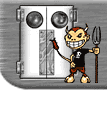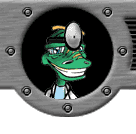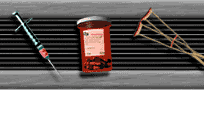





 |
 |
 |
||
 |
 |
 |
||
| |
|
|
|
|
| Home : BioPhysical Module : Tools | ||||||||||||||||||||
Tools of the Biophysical Realm
The
problem child is invariably trying to solve a problem rather than be one.
His methods are crude, and his conceptions of his problem may be faulty,
but until the care giver has patiently sought, and in a sympathetic fashion
found, what the child was trying to do . . . he is in no position to offer
advice. -George Senn.
ScreeningThis is a way of picking up clues and ideas about what is happening. It is quite easy to label a child, based on behavior, and it is easy to be wrong. In medical situations, doctors spend years learning the different symptoms that belong to each system and then finding ways to consider or rule out a diagnosis, based on that experience. We do not give teachers as much experience when it comes to understanding student behavior, but the more a teacher knows, the better the chances are that the right things will be done to help students. When working to understand a student, use the following screening technique: 1) Look for the simplest solution. For instance, if a child is not working, the simplest solution is -- a. the child is tired b. the work is not the right level for the child c. the child is ADD. Exactly - simplest for whom? The simplest thing for the teacher to do is assume the child is ADD. That means it is not the teacher's problem. If the child is tired or the work is not at the child's learning level, the teacher has added responsibilities. Well, the simplest solution is to see if the work is wrong or the child is tired. 2) Rule out non organic or environmental possibilities first. In this case, we look for what might be causing something around the child. We may look at a check list. What might contribute to the student's ability to learn or distract from it. By the way, feel free to develop your own checklist.
3) Screening and assessment is done with a child and family, not TO a child. Be sure that this is a collaborative process in which the significant members, including the child, family and interested school folks all play a role. 4) The purpose of screening is to recognize a way to treat and support the student. Especially in education, it is important to remember that we are not finding ways to diagnose or give a prognosis -- we are finding ways to help a student learn, grow, feel capable and be capable. 5) Confidentiality is crucial. As we delve into a child's life, motives, behaviors, we do so to support the child. Of course, sometimes the teacher needs an outlet for pent up emotions and frustrations. Still, the age old practice of meeting peers in halls and lounges and discussing child behavior is inadvisable and probably unethical as well. Screen, think, ponder, question, solve - but remember how critical it is to keep a student's life and actions a private affair.
MedicationThere are more and more medications on the market that support behavior and emotional issues. As we get better at recognizing children who are hyperactive, who have emotional issues or the signs of future emotional issues, it is helpful to know that there are "pills" to solve many things. Remember, when looking to a simple solution for the teacher - like medication for ADD, that we must balance the needs of the child very carefully. If a child is medicated, will it make life better for him or her - including long term side effects? Will it enhance the child's quality of life? Will it make it more or less likely that the student will feel good about self? Does the child want to take the medications, and if not, is it a question of danger to self or others, or just convenience and ease of handling for others? Will the medications interfere with the brain and processing? Are there hidden side effects that alter memory and recall? Will the bio-chemical reaction dull the senses, interfere with creativity and the child's right to be who he or she is? Some gifts make children look different than average children. Remember how difficult it was for Einstein to gain acceptance as a child, for Edison to get a proper education. We do not want to medicate a child's genius. Is the child really ADD? We are probably misdiagnosing ADD and overmedicating. It is not a simple matter. A child who does not need meds may have body organs and health systems compromised - may learn to depend on drugs, setting up future drug abuse problems - may have an eating disorder - may take the need for medication as being fundamentally unsound emotionally - may fail to learn self control by depending on substances to solve personal problems.
Cochlear implants, and Assistive medical devices...A Cochlear Implant is a device designed to help severe to profoundly deaf individuals who gain little or no benefit from hearing aids. Links - Flash movie on implants; Information site , Community site for hearing impairment issues - Hearing exchange
The web gives examples of devices that may someday allow humans to use technology to regenerate or enhance natural abilities with computers. Today's science fiction may be tomorrow's reality. Try looking up material on bionics.
Snacks and breaksHuman beings get tired. Children often have very short attention spans. As the child runs out of energy or fuel, the teacher may notice lethargy, but just as often, the child will seem hyper or wound up. As the fuel gets low and energy drains, some children lose the ability to maintain control over their behavior. This is a biological phenomenon. You can learn more about it as we continue to learn about the brain and the part sugar or glucose plays in memory and learning. While we become more knowledgeable about this, we do know that snacks help students learn. About every two hours, students can benefit from something like crackers, popcorn or dry cereal. For a while, some people believed that sugar was bad for students with ADD. It may not be the case. I find better behavior when a student has a snack if he or she is unfocused and distractible. I find it a great solution to irritability in the classroom, as well. Save the 'lecture' when students start to get out of control and put some popcorn in a coffee filter or paper cup. Sing a silly song together, and suddenly, everything will be humming again.
Substance AbuseWhat do you know about drug and alcohol abuse? Learn more by surfing the net. Here are some good links to get you started.
Current statistics about drug abuse in America Drug addiction article The role of schools in combating substance abuse Internet links about drugs and violence
Breaks and physical activitiesA well run kindergarten usually has a change of pace every three to five minutes. That mirrors the child's attention span - about one minute for each year of age. Five year olds can stay still about five minutes. Of course, if they feel enthralled, they may stay involved longer. It is developmentally appropriate to find a first grader moving from activity to activity without closure. A good way to change that behavior is to stop every five minutes, change the flow a bit and send the students back into the work setting refreshed. Music helps, finger plays help, deep breathing is a great idea, and so is running in place or following a short video clip of exercises.
It is harder to remember that students in Jr. High are only 12 to 15 years of age, and attention spans are less than 15 minutes. In a 45 minute period, students need at least three activity changes. How about you? What is your attention span? How long can you stay focused on something of moderate interest? Say -- how long can you keep from getting upset if in line at the grocery store? How long do you give undivided attention to a professor or principal? Do you stay focused at church or community meetings? How long can you pray or meditate before you lose your concentration or thoughts wander?
Developmental readinessMany developmental studies were conducted by doctors. The Gesell Institute is noted for extensive studies on human development. The PEPSI material presented in this module will give you a feel for the importance of recognizing whether a student is misbehaving, or being age appropriate. Here is an example. The age when ADD is most often misdiagnosed is seven. The normal behavior of seven-year-olds are almost a perfect definition of hyperactive, distractible, irritable, unfocused. In fact, the Gesell Institute calls seven "live in a minor key." Many parents and teachers get upset about the odd behaviors and quirky actions of a child who seemed clever, capable and stable. Teachers who know about development can reassure parents and children.
Genetic strengths, predispositionThe "nature-nurture" controversy is heating up again. Some of the questions that arise from this idea of inherited traits or social milieu include the following: Which affects the student more, the environment or natural abilities? Is it possible to teach all students the same way, or are there really many forms of intelligence? If children have different kinds of intelligence, then is is reasonable or fair to expect everyone to do well on achievement tests? Are some children naturally neat and organized? Is there a different time frame for some students to learn that does not match our current curriculum? Do some children need special attention and support to learn and thrive in the schools? The tools you may gather in looking at these questions include, meeting individual needs, letting students "grow" into tasks they are not ready to perform today, recognizing that each student will be a person with distinctive needs and requirements as well as all the needs and attributes of being fully human.
Therapy – OT, PT, Speech Therapy comes from the medical model. There are many kinds of therapy. Three that are most often provided as part of IDEA '97 services are Occupational Therapy - a therapy designed to provide activities to improve muscle control and increase self help skills, Physical Therapy - a therapy that provides nonmedical support to help students with physical disabilities, and Speech Therapy - services to help students increase quality and quantity of speech, and the services are provided by Speech/language Pathologists. OT is Occupational Therapy. It works with the student to enhance their development. A good place to get a quick view is at the link, OT helping Children and a related link for parents and teachers on the relationship between learning and OT PT is Physical Therapy. It provides support in a number of ways. The PT may help set up a classroom or school setting that maximizes the mobility of the child, teach care givers how to lift children safely, arrange for devices that enhance a student's options for moving and using assitive technology. Some help adjust standing boards and wheel chairs. Making the physical environment more ameanable can be a great help in the academic and home setting. Click here for an overview link. SLT is Speech and Language Therapy. It provides a variety of different services to help students who have communications problems. These may include hearing, articulation, vocabulary, speech impediments, or any specific issue that inhibits facility in communicating. This is a good site for activities and support tools. To visit a good site that provides links, click here Once you have completed this topic you should: Go back to Tools
|
||||||||||||||||||||
| E-mail J'Anne Ellsworth at Janne.Ellsworth@nau.edu | ||||||||||||||||||||
|
Course Created by J'Anne Ellsworth & Center for Technology Enhanced Learning Copyright
© 2001 Northern Arizona University |
 |
 |
 |
 |
 |
|